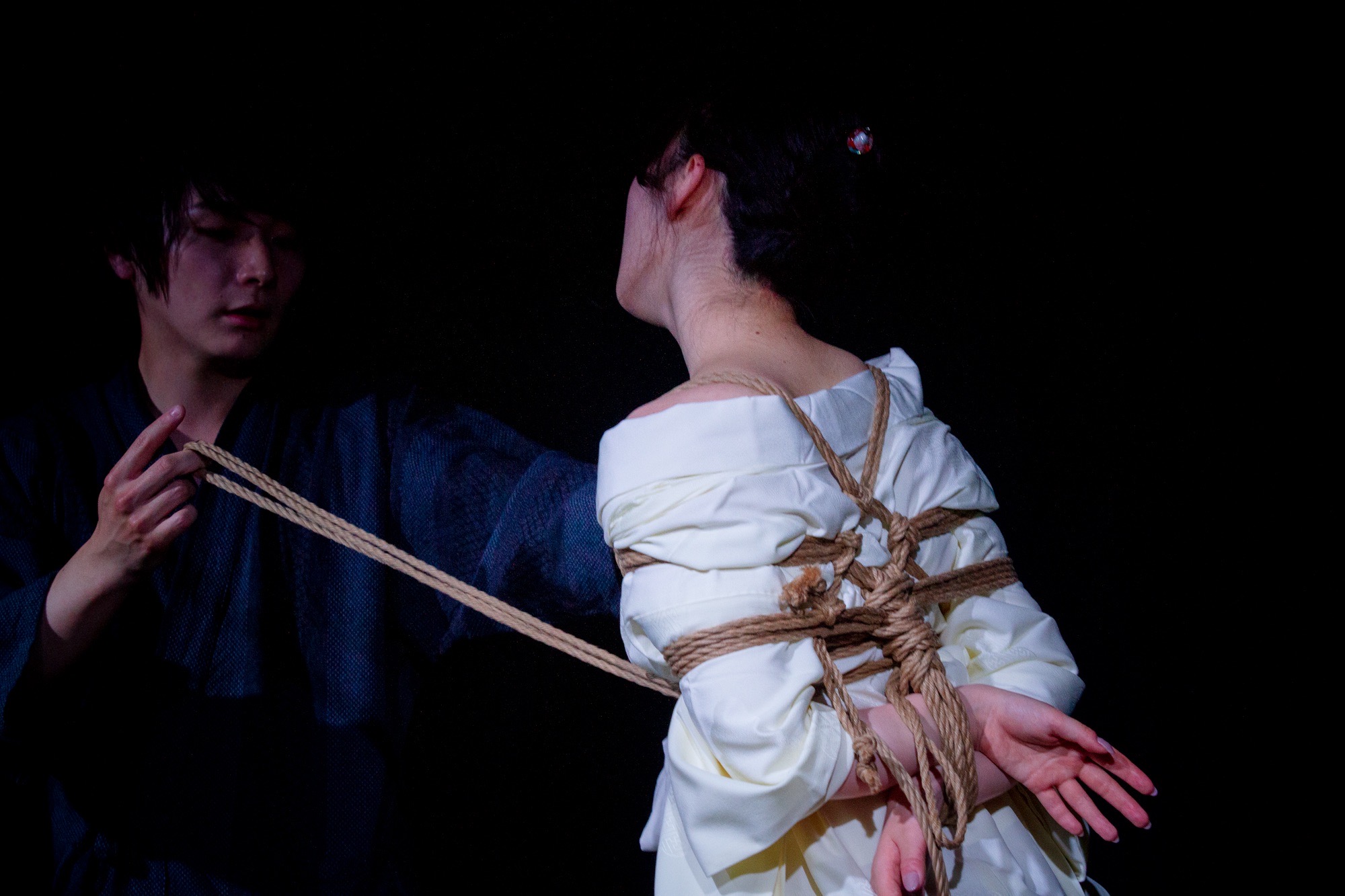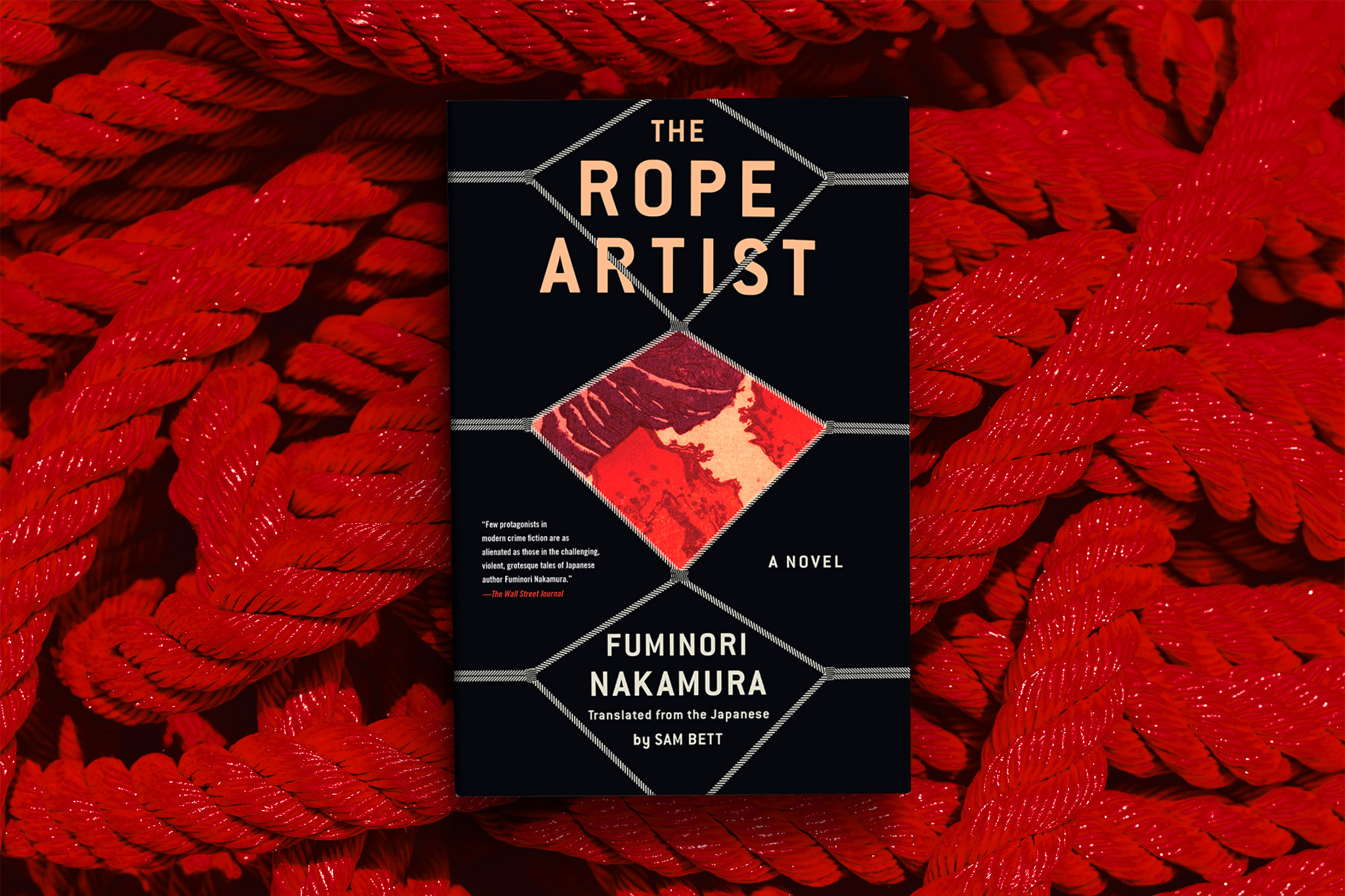Author Fuminori Nakamura has a penchant for the dark and depraved. In The Rope Artist, we are drawn into the world of performance rope artistry, or kinbaku. It’s a story centering around a head-scratching murder investigation that shines a light on the spiritual and subcultural idiosyncrasies of the ancient Japanese art of bondage tying. The Rope Artist is TW Book Club’s pick for May 2023.
All Tangled Up
The Rope Artist sets the scene with a hazy recollection from Detective Mikiya Togashi about his childhood memories of a near-drowning experience at the beach. From there, his work on a fresh murder case is interrupted by feverish dreams and blackouts. Is he losing his mind, or is something else afoot?
The case in question: A man named Kazunori Yoshikawa has been bludgeoned to death and his corpse manipulated into a peculiar pose. A rogue rope artist who did not subscribe to traditional kinbaku rules, the victim leaves behind more questions than answers. Togashi and his colleague, Yuichi Hayama, are met with confusing loose ends, missing pieces and misleading evidence. Some of this is orchestrated by Togashi himself.
The Edge of Darkness
While Togashi believes that “a detective’s work happens on the edge of darkness,” he is submerged in it. The detective actively sabotages the case and works against Hayama while driven by dubious motivations, including his own sexual desire. As two congruent investigations continue — the rogue and the official one — things begin to unravel. Togashi subsequently treads deeper into dangerous territory. Maiko Kirita, one of the women who had previously performed ropework with Yoshikawa — and someone Togashi was previously involved with — muddies the waters with her own agenda. Ami Ito, another key witness, is missing and presumed dead. That is, until a striking lookalike is served to both detectives on a silver platter.

Kinbaku, or Japanese rope bondage, is a form of consensual, sensual play that involves the meticulous binding of the body. It ranges from intimate floor techniques to full-body suspensions.
Learning The Ropes
One of the most interesting aspects of The Rope Artist is how it masterfully weaves in kinbaku lore, giving insight into the deeper meanings of ropework. Murder victim Yoshikawa’s artistry drew heavily from Shinto beliefs. He exclusively used hemp rope, which is the same material for shimenawa ropes (the twisted cords you find hanging from torii gates and wrapped around trees at shrines) that mark the boundaries between the secular and spiritual worlds.
Before his demise, Yoshikawa claimed to be taking direction from the ropes themselves, ignoring the woman within them. This is in direct contrast to his peers, who consider rope art to be a dialogue between the artist and his muse. As one character explains, the star of the show is the woman being tied up. The art must draw out her emotions through the physical pressure of the ropes and make her shine.
These fascinating insights into kinbaku culture showcase the difference between the murder victim’s eccentric take on the practice and the consensual art form that is typically done in real life.
Tying it All Together
The Rope Artist is a good choice for those seeking a mind-bending mystery that burrows into the brains of its characters and excavates the darkness of their inner lives. While many elements are resolved by the end, don’t expect redemption for these tortured souls.
The Rope Artist is translated by Sam Bett.
Content notes: As the novel’s rope play topic may suggest, there is a lot of explicit sexual content and imagery.









